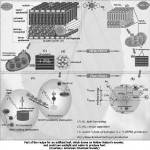
- Findings released by the scientists behind the study at a Dialogue Workshop organised by Centre for Science and Environment (CSE), Indian Council of Medical Research (ICMR) and US-based Health Effects Institute.
- Annual premature deaths caused by particulate air pollution have increased by six times since the year 2000.
- With one fifth of global deaths, India shows the greatest impacts of outdoor air pollution.
- Globally, air pollution-related deaths have increased by 300 per cent since 2000. About 65 per cent of these deaths occur in Asia.
- CSE’s national air quality analysis shows half of urban population breathes air with particulate levels that exceed the permissible limit. One third of urban Indians live in critically polluted areas.
- CSE’s health survey in Delhi shows majority of Delhiites say air pollution has worsened and blame rising number of vehicles for it.
New Delhi – Outdoor air pollution has become the fifth largest killer in India after high blood pressure, indoor air pollution, tobacco smoking and poor nutrition – says a new set of findings of the “Global Burden of Disease (GBD)” report. The India and South Asia-specific findings were officially released here on February 13 at a Dialogue Workshop jointly organised by Centre for Science and Environment (CSE), Indian Council of Medical Research (ICMR) and the US-based Health Effects Institute.
The Global Burden of Disease (GBD) report is a world-wide initiative involving the World Health Organization (WHO) which tracks deaths and illnesses from all causes across the world every 10 years. The new findings were released by Aaron Cohen, principal epidemiologist of the Health Effects Institute and co-chair of the GBD Ambient Air Pollution Expert Group.
The report says that in 2010, about 620,000 premature deaths occurred in India from air pollution-related diseases. GBD has ranked air pollution as one of the top 10 killers in the world, and the sixth most dangerous killer in South Asia. In fact, particulate air pollution is now just three places behind indoor air pollution, which is the second highest killer in India.
“This is a shocking and deeply disturbing news. This calls for urgent and aggressive action to protect public health,” said Sunita Narain, Director General, CSE.
Among the others who attended the release and participated in the discussions were Kesav Desiraju, Secretary, Union Ministry of Health and Family Welfare; Sanjiv Kumar, Environment Secretary of Delhi; Vinod Raina, Head, Department of Medical Oncology, AIIMS; S. K. Chhabra, Head, Department of Cardiorespiratory Physiology, Vallabhbhai Patel Chest Institute; Randeep Guleria, Head, Department of Pulmonary Medicine, AIIMS; Sanjeev Bagai, CMD, Nephron Clinic and Health Care; and Professor Kalpana Balakrishnan of the Sri Ramchandra Medical College and Research Institute.
Daniel Greenbaum, President, and Robert O Keefe, Vice President, Health Effects Institute, also shared the findings of the GBD assessment.
The India-specific analysis has been done using estimates of air pollution exposure at the national level and incidence of leading causes of deaths, aided by ground-level measurements, satellite remote sensing and models to capture population exposure. The GBD assessment follows a rigorous scientific process involving over 450 global experts and partner institutions including the Institute of Health Metrics and Evaluation, the WHO, the Health Effects Institute, the University of Queensland, Australia, Johns Hopkins University, and Harvard University.
Key New Findings – India
- Shocking increase in Indian death toll: Air pollution is the fifth leading cause of death in India, with 620,000 premature deaths in 2010. This is up from 100,000 in 2000 – a six-fold increase.
- Massive loss in healthy years: Air pollution is the seventh leading cause behind the loss of about 18 million healthy years of life due to illness. It comes after indoor air pollution, tobacco smoking, high blood pressure, childhood underweight, low nutritional status, and alcohol use.
- Respiratory and cardiovascular diseases key reasons for air pollution-induced premature deaths: These diseases include stroke (25.48%), chronic obstructive pulmonary disease (17.32%), Ischemic heart disease (48.6%), lower respiratory infections (6.4%), and trachea, bronchus and lung cancer (2.02%).
Key Findings – South Asia and the World
- Increase in death toll: Air pollution related diseases cause 3.2 million deaths worldwide every year. This has increased from 800,000, last estimated by GBD in the year 2000 – a whopping 300 per cent increase. About 74 million healthy life years are lost annually.
- Ranked among the top 10 killers in the world: In South Asia, air pollution has been ranked just below blood pressure, tobacco smoking, indoor air pollution, poor intake of fruits and diabetes. Everyone – rich and poor – is vulnerable.
- Two-thirds of the death burden from outdoor air pollution occurs in developing Asia: In 2010, particulate air pollution in Asia led to over 2.1 million premature deaths and 52 million years of healthy life lost, which is two-thirds of the worldwide burden. Killer outdoor air contributes to 1.2 million deaths in East Asia where economic growth and motorization are taking over, and 712,000 deaths in South Asia (including India) which is at the take-off stage. This is much higher than the combined toll of 400,000 in EU 27, Eastern Europe, and Russia.
 CSE Analysis Exposes Severe Air Pollution Trends in India
CSE Analysis Exposes Severe Air Pollution Trends in India
In the wake of the GBD findings, CSE has analysed the latest air quality data available from the Central Pollution Control Board (CPCB) for the year 2010. Of the 180 cities monitored for SO2, NO2 and PM10, only two – Malapuram and Pathanamthitta in Kerala – meet the criteria of low pollution (50% below the standard) for all air pollutants.
Trends in Polluted Cities
- Close to half the cities are reeling under severe particulate pollution while newer pollutants like nitrogen oxides, ozone and air toxics are worsening the public health challenge.
- Vulnerable urban population: Half of the urban population breathes air laced with particulate pollution that has exceeded the standards. As much as one third of the population is exposed to critical levels of particulate pollution. Smaller and more obscure cities are amongst the most polluted.
- More cities in grip of PM10: About 78% cities (141) exceed the PM10 standard. 90 cities have critical levels of PM10; 26 have the most critical levels, exceeding the standard by over three times. Gwalior, West Singhbhum, Ghaziabad, Raipur and Delhi are the top five critically polluted cities.
- More cities in grip of NO2: About 10% of the cities (19) exceed the NO2 standard. Of these, about nine have critical levels. Howrah, Barrackpore, Badlapur, Ulhasnagar and Asansol are the top five critically polluted cities.









